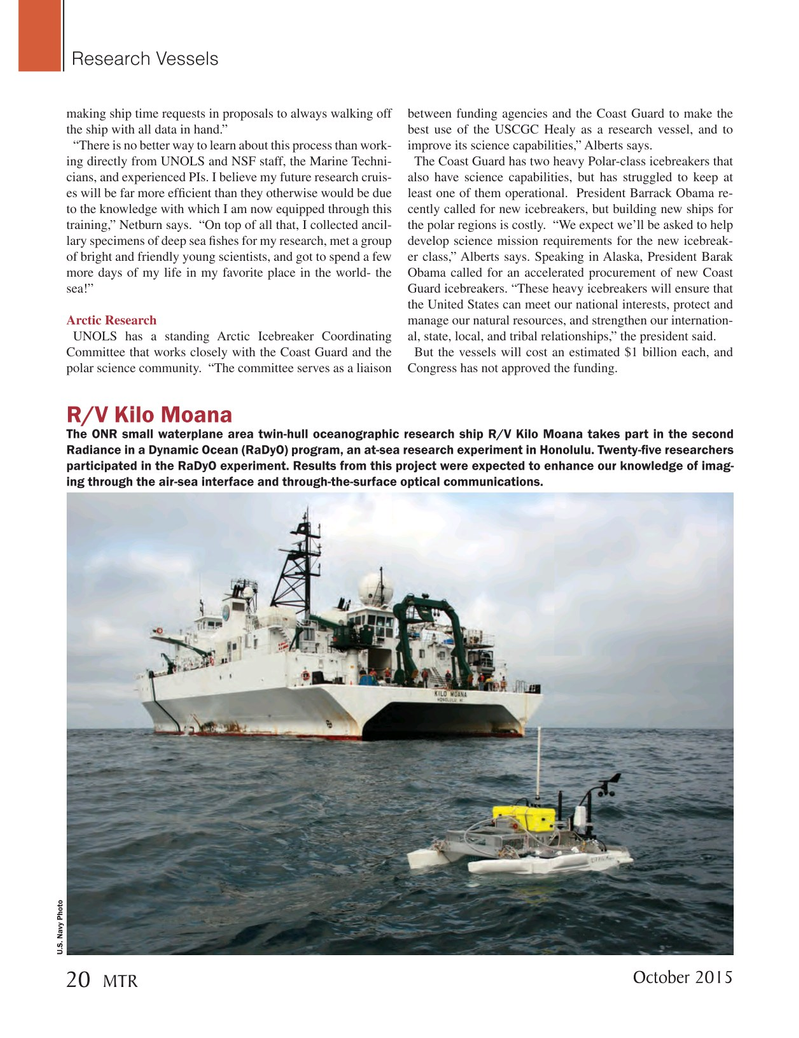
Page 20: of Marine Technology Magazine (October 2015)
AUV Operations
Read this page in Pdf, Flash or Html5 edition of October 2015 Marine Technology Magazine
Research Vessels making ship time requests in proposals to always walking off between funding agencies and the Coast Guard to make the the ship with all data in hand.” best use of the USCGC Healy as a research vessel, and to “There is no better way to learn about this process than work- improve its science capabilities,” Alberts says.
ing directly from UNOLS and NSF staff, the Marine Techni- The Coast Guard has two heavy Polar-class icebreakers that cians, and experienced PIs. I believe my future research cruis- also have science capabilities, but has struggled to keep at es will be far more ef? cient than they otherwise would be due least one of them operational. President Barrack Obama re- to the knowledge with which I am now equipped through this cently called for new icebreakers, but building new ships for training,” Netburn says. “On top of all that, I collected ancil- the polar regions is costly. “We expect we’ll be asked to help lary specimens of deep sea ? shes for my research, met a group develop science mission requirements for the new icebreak- of bright and friendly young scientists, and got to spend a few er class,” Alberts says. Speaking in Alaska, President Barak more days of my life in my favorite place in the world- the Obama called for an accelerated procurement of new Coast sea!” Guard icebreakers. “These heavy icebreakers will ensure that the United States can meet our national interests, protect and
Arctic Research manage our natural resources, and strengthen our internation-
UNOLS has a standing Arctic Icebreaker Coordinating al, state, local, and tribal relationships,” the president said.
Committee that works closely with the Coast Guard and the But the vessels will cost an estimated $1 billion each, and polar science community. “The committee serves as a liaison Congress has not approved the funding.
R/V Kilo Moana
The ONR small waterplane area twin-hull oceanographic research ship R/V Kilo Moana takes part in the second
Radiance in a Dynamic Ocean (RaDyO) program, an at-sea research experiment in Honolulu. Twenty-? ve researchers participated in the RaDyO experiment. Results from this project were expected to enhance our knowledge of imag- ing through the air-sea interface and through-the-surface optical communications.
U.S. Navy Photo
October 2015 20
MTR
MTR #8 (18-33).indd 20 9/29/2015 1:44:08 PM

 19
19

 21
21
